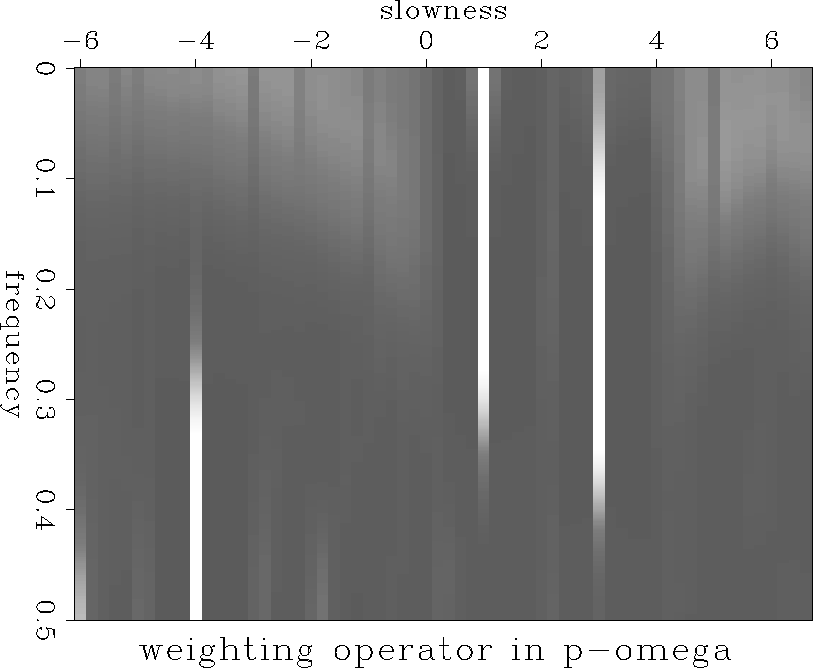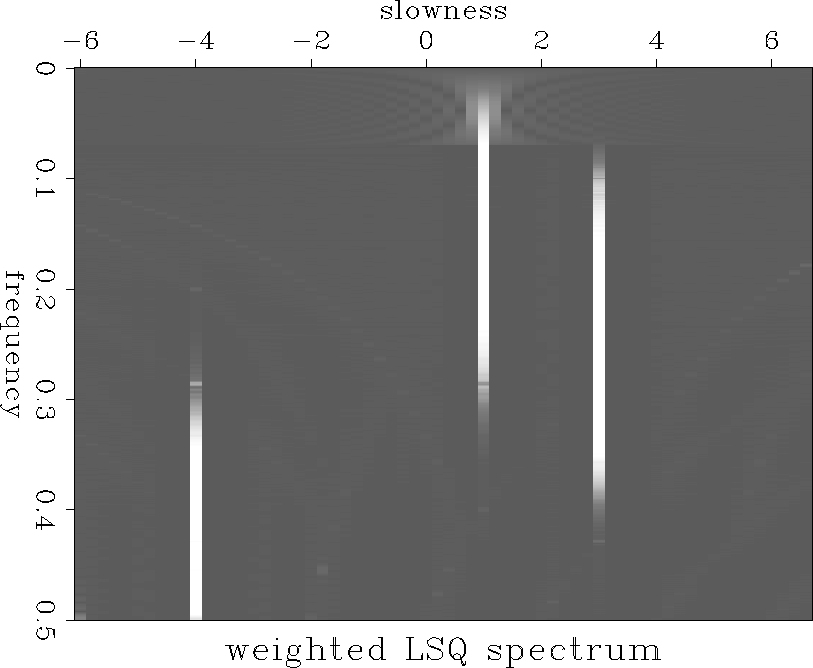While the masked operator method works well for synthetic data it is
difficult to apply to real data. The masking operator is an ``all or
nothing'' operator, data is classified either as ``aliased'' or
``unaliased.'' It is hard to create a good mask function for real data
because of the presence of noise, amplitude variation along events
etc. If an incorrect mask function is used the masked operator may
become singular or have a large null space. The iterative solution
process converges very slowly and it may produce spurious
high amplitudes in the ![]() domain.
domain.
A more robust method is one that penalizes energy in the regions identified as ``aliased'' but does not force it to be zero. This method may be slower to converge than the mask method if the mask is chosen correctly but it will not fail completely if the weighting function is chosen poorly.
The new method minimizes the sum of the data mismatch and a weighted length measure.
![]()
The weighting operator is a diagonal operator with weights that are high where the data is assumed to be aliased and low where it is assumed to be unaliased. If this problem is interpreted as a maximum likelihood scheme the operator W is an estimate of the inverse model covariance matrix. The diagonal operator implies that model parameters are uncorrelated, with a variance that is low (where W is high) in the areas where the prior model (zero) is expected to be a good estimate, and high where the data is likely to be different from zero.
The new problem can be solved by casting it in the form of the linear system of equations,
![]()
I generate the weighting function in a manner similar to the masking function. Instead of using a threshold to convert the continuity function into a zero or one I scale the values to lie in the range zero to one. The inverse of this value is used as the weighting factor in calculating the weighted length of the model vector.
Figure ![[*]](http://sepwww.stanford.edu/latex2html/cross_ref_motif.gif) shows the inverse weighting function
derived from the three-dip synthetic data and
figure
shows the inverse weighting function
derived from the three-dip synthetic data and
figure ![[*]](http://sepwww.stanford.edu/latex2html/cross_ref_motif.gif) shows the result of the inversion. As
expected a little aliased energy has leaked through. This could be
avoided by using a more severe weighting operator.
shows the result of the inversion. As
expected a little aliased energy has leaked through. This could be
avoided by using a more severe weighting operator.
|
three-weightop
Figure 12 Inverse weighting operator displayed in the |  |
|
three-weightlsq
Figure 13 |  |